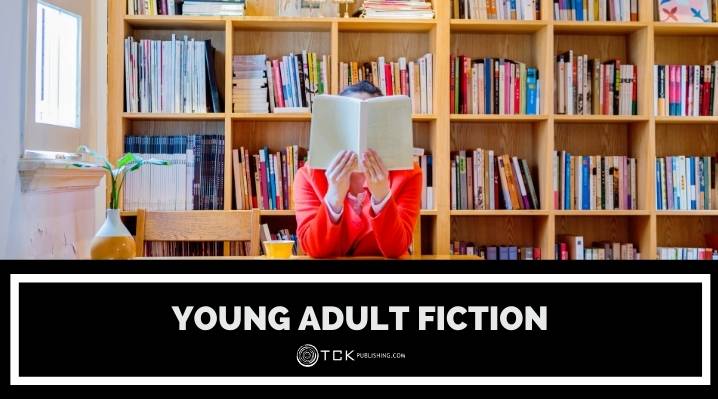
Young adult fiction has been one of literature’s hottest categories for a while now. In fact, most of the books that have gone viral or been adapted for film or television lately are categorized as YA.
For example, The Maze Runner, Divergent, and The Hunger Games are just a few YA titles that have amassed legions of loyal fans of their books and film adaptations.
What Is Young Adult Fiction?
Young adult fiction is generally described as books written for readers from 12 to 18 years of age. It’s meant to be the next level of reading material after middle-grade fiction and softens the transition to adult fiction. It offers readers stories that are, in general, more emotionally and thematically advanced.
YA isn’t really a genre, but a category of fiction based on readers’ ages. It represents a certain demographic’s level of reading, worldview, and maturity, and exists in many genres such as fantasy, mystery, and science fiction.
It captures the common concepts and emotions that teens usually struggle with, including friendship, finding their identity, and forming romantic relationships.
Most young adult stories focus on adolescents who are beginning their transition into adulthood. They discover hidden aspects of themselves, work through personal problems, and learn to take responsibility for their actions. As such, YA stories are also called coming-of-age stories.
Young Adult vs. Adult Literature
Young adult and adult literature can sometimes be hard to separate, since they often share similar themes, structures, and audiences. But there are key differences that justify their separation into two distinct categories. Below are just a few of their differences.
1. Age of the Protagonist
The biggest difference between YA and adult literature is the age of the protagonist. YA protagonists tend to be 12-18 years of age while adult fiction protagonists usually start at 18–30 years old.
This isn’t an absolute rule, though. Many YA novels feature main characters who are over 20 years of age. Conversely, there are also many adult fiction books that have protagonists who can be considered teens.
Many YA books also cross over into adult literature. So while they start as YA, as the characters grow up, elements of the story also change to fit more adult themes.
2. Voice and Style
Bear in mind that while YA can be enjoyed by all ages, its specific target market is still adolescents. Teenagers act, think, speak, and experience things differently than adults.
A teenager’s perspective is then what’s important to the story—not having characters who just so happen to be teens. Case in point, Catcher in the Rye features an adolescent protagonist but is considered more as adult fiction.
Young adult literature also favors an “in the moment” style of storytelling. While characters often think about the past and future, it’s the present that matters most. YA stories are often told in close third-person or first-person point of view.
Meanwhile, adult fiction includes significant reflections of the past. Entire chapters are dedicated to establishing a character’s background and they frequently agonize over the future. It most often uses a third-person point of view, giving readers an omniscient perspective.
When the main character’s concerns and priorities align with those of a typical teenager’s, and if their stories are told with a sense of immediacy, then you’re most likely reading a YA novel.
3. Themes
Many people make the mistake of thinking that the themes existing in YA are less complicated than those in adult fiction. This is simply not true.
There are themes that are more specific to each category, but more often than not, they are interchangeable. It’s the way these themes are explored that distinguishes one from the other.
In YA, characters discover and push against boundaries in an attempt to define who they are. Adult fiction tends to have characters being constrained by those same boundaries and trying to live within them.
Take romance, a theme frequently explored in both categories, as an example. But while YA usually focuses on first love, adult fiction is more about searching for “the one.”
Examples of Young Adult Literature
To give you a better idea of what a young adult story is, here are a few examples that you can check out.
1. The Fault in Our Stars by John Green
Hazel Grace Lancaster is a 16-year-old patient with thyroid cancer that has also reached her lungs. At her mother’s insistence, she attends a cancer support group, where she meets 17-year-old Augustus Waters, who is currently in remission.
Mutually attracted, both begin to explore each other’s quirks, interests, and life stories. And together, they face the difficulties, doubts, and disappointments of cancer.
2. Tokyo Ever After by Emiko Jean
Izumi Tanaka, half-Japanese and half-American, feels like she doesn’t belong in the small, mostly white town she and her mother live in. But then she discovers a life-changing secret—her unknown father is none other than the Crown Prince of Japan, making her a literal princess.
In an effort to understand herself, she travels to meet a father she never knew and a country she’s only ever dreamed of. But soon she discovers that being a princess isn’t all about parties and dresses.
3. The Giver Series by Lois Lowry
In the future, society has eliminated conflict by converting everyone into “Sameness,” leaving everyone without any emotional depth.
In these linked stories, Jonas struggles to hold the memories before the Sameness; Kira, with her twisted leg, must learn to survive in a world where the weak and disabled are left to die; and Matty has to learn to use his power to heal society and bring back emotion.
4. The Book Thief by Markus Zusak
It is 1939, Death is busy and will be busier still. But it still finds a way to satisfy its curiosity about humanity, this time focusing on an orphan girl who loves doing what the Nazis hate.
Still adjusting to her new parents and surroundings, Liesel Meminger is exposed to the horrors of the Nazi Regime. With the help of her foster father, she learns how to read and begins her own little revolution—stealing books, reading them, and sharing the knowledge contained within.
5. Howl’s Moving Castle by Diana Wynne Jones
Sophie is the eldest of three sisters in a society that believes the eldest of three siblings will never be successful. Resigned to living a dull life, she discovers a power that threatens the Witch of the Waste, who turns her into a crone.
To reverse the curse, she must handle the notorious Howl, make a deal with a demon, and challenge the Witch of the Waste head-on. Along the way, she might discover something extra too.
Adult Readers of YA
According to a 2012 study, about 55% of buyers for literature intended for readers aged 12 to 17 are actually 18 years old or older, with 28% of that group aged 30 to 44. Most of them don’t buy it for others, as 78% of these adults purchase these books for their own reading.
A 2015 study found that while adult fiction and nonfiction have dropped in sales in the U.S., there’s a 40% increase for the juvenile market.
Looking at these numbers, it’s safe to say that YA fiction is experiencing rapid growth. But why are the majority of people reading them, adults?
A big part of the reason may be relevance. People across all ages can relate to most of the themes that YA often explores. While teens find fellowship in these books that express their current struggles, adults reminisce about their past experiences.
There’s also the fact that a lot of YA fiction aged with their readers. Series like Harry Potter, Goosebumps, and The Baby-Sitter’s Club are great examples of these. As the readers grew older, these series developed with them.
This phenomenon broke the school of thought that some books are only appropriate for certain ages. Now people are more comfortable with reading books that aren’t necessarily marketed to them.
In short, YA fiction offers the perfect blend of nostalgia, escapism, and relatability.
What YA books have you read? Share them in the comments below!
If you enjoyed this post, then you might also like:
- What is Commercial Fiction? Definition, Examples, and Common Myths
- Children’s Literature Genres: The Difference Between Children’s Lit, Middle Grade, YA, and New Adult
- Fiction vs. Nonfiction: Breaking Down the Differences
- What Is Upmarket Fiction? Definition and Examples

Cole is a blog writer and aspiring novelist. He has a degree in Communications and is an advocate of media and information literacy and responsible media practices. Aside from his interest in technology, crafts, and food, he’s also your typical science fiction and fantasy junkie, spending most of his free time reading through an ever-growing to-be-read list. It’s either that or procrastinating over actually writing his book. Wish him luck!

Thanks for this, it has helped my define a novel I am submitting as YA.
We’re so glad we could help! :)